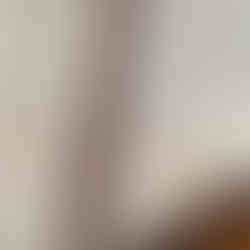DIY Plaid Fall Accent Pillow
- jessahlborn
- Oct 17, 2020
- 3 min read
Decorating for fall can be tricky when you don't have a ton of tabletop or shelving space. Because my apartment falls into this category, one of my favorite ways to update a space for a new season is through pillows - or in this case, pillow cases. While this is a sewing project and requires a sewing machine, I promise it's very simple -- perfect for a beginner. So if you have two hours and access to a sewing machine, let's get started.

What you'll need:
- sewing machine - plaid fabric - all purpose thread (in matching color) - pins/wonder clips - ruler/tape measure - scissors/rotary cutter - pillow form - 2 hours

Instructions:
Step 1: Measure and cut fabric
Begin by measuring your pillow form. I generally like to measure the seams along the top and side of the pillow for an accurate measurement.
Since we'll be sewing with a 1" seam allowance, you'll want to cut your front panel with 2" added to both the width and height of the pillow. For example, if your pillow measures 14" x 28", your front panel should measure 16" x 30". Cut your fabric to these dimensions ensuring that the way your fabric pattern direction is to your liking.
To cut the 2 back panels, you'll keep the same height (in this case, 16"). To determine the width, take half the width of the pillow (14"), add 2" for seam allowance on each side (16"), and add 5" for the overlap (21"). This will make more sense once the pillow sews together.

Step 2: Sew inside edges of back panels
You'll want the inside edges of the two back panels to be nice and finished as this will be where the pillow form is inserted into the case. Fold and pin the right side of your left panel and the left side of your right panel and sew a straight stitch with a 1" seam allowance down the fold. When folding the seam, ensure you are folding with the wrong side folded in on itself. Once complete, the two finished, inside edges should overlap in the middle when stacked in line with the front panel.

Step 3: Stack and sew
Now, it's time to stack your fabric. Begin with your front panel on the bottom, right side of the fabric facing up (toward you). Layer both back panels on top with the right side of the fabric facing down (away from you) so that right sides of the front and back panels are touching.
Pin or clip into place around all sides.
With a 1" seam allowance, sew all around the entire pillow case.

Step 4: Snip and turn
Once sewn all around, clean up any long threads. Then, remove the bulk from your pillow case corners by snipping them close (but not too close) to the seam. This will allow your corners to properly turn right side out.
Next, turn your case right side out and pop the corners - use the eraser side of a pencil or similar object (I do not recommend scissors) to gently push the corners out if needed.
Finally, gently insert your pillow form into the case through the back - being careful not to rip any of your brand new seams.

And that's it! I promised you an easy one. The best part about this project is that you can make different pillow cases for every season or create new designs as your taste or trends change.
As always, I'd love to see what you create based on this tutorial so be sure to tag me in your projects on Instagram (@anothermessbyjess). Happy sewing and happy snuggles.
















Comments